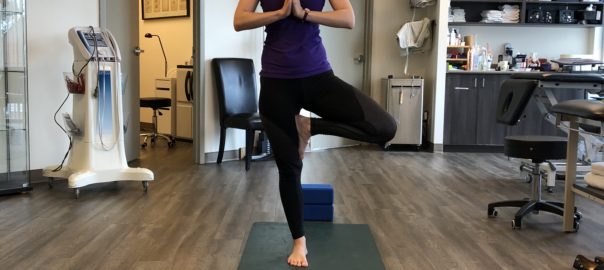Are you new to yoga? Tried it on occasion? Always wanted to but never got around to it? And now that you are social distancing, you finally have some extra time to try!
Don’t worry, you don’t have to be all that flexible or fit.
Start Where You Are…
Today we can cover some basic positions to challenge your balance!
- Tadasana, or Mountain Pose
- Stand upright with the bases of your big toes touching and heels slightly apart.
- Tighten your thigh muscles and keep kneecaps pointing forward, or even, slightly outward.
- If the arches of your feet tend to collapse, imagine pulling up from the inner arches of your feet.
- Tuck in your tailbone, and open up the chest as you pull the shoulder blades slightly back and downward. Allow arms to hang by your sides, palms facing forward.
- Keep head held high and imagine a string pulling you upright, as if attached to the top of your head.
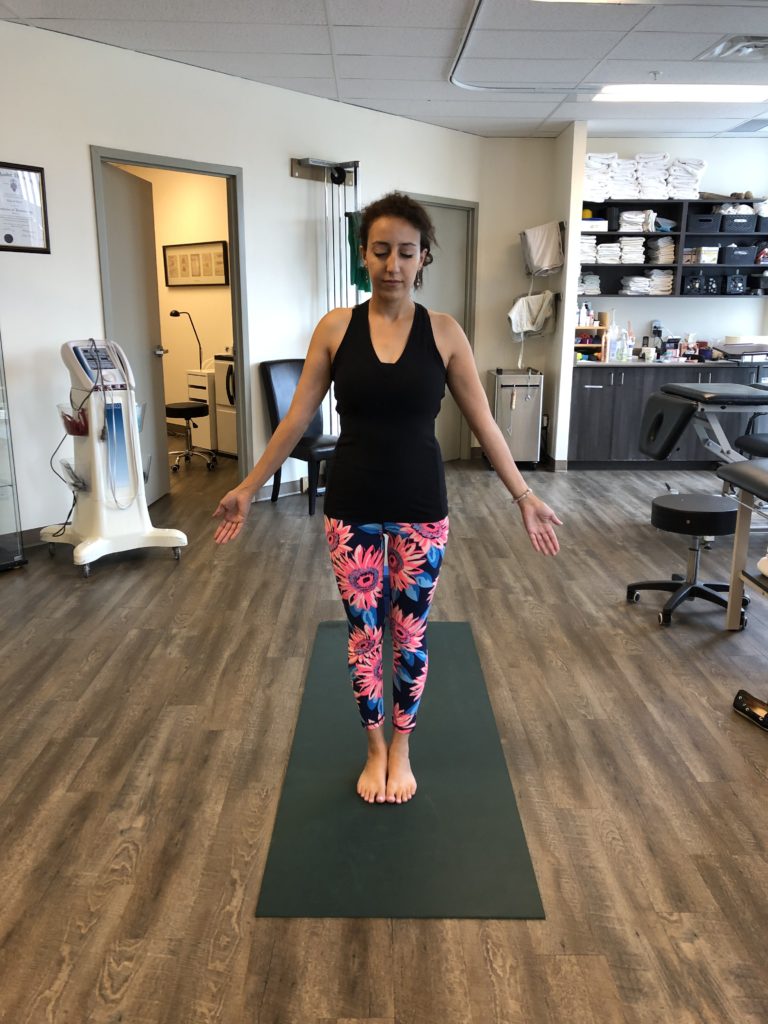
This pose may be easy to balance in. If holding the position for 30 seconds feels easy, close your eyes and try again. You can slowly shift weight forwards and backwards as well. If it continues to be easy put feet so they are touching beside one another, or even in tandem like a tightrope.
If you use a cane or crutches you may want to try this pose with them. Or you can always set up stable chairs or do this beside a counter and chair. Please make sure you are safe.
- Warrior I Pose
- From Mountain Pose, reach left leg back behind you, as far as you are comfortable.
- Shift the left foot so that it is pointing out at a 45-degree angle.
- Pull the right hip and pelvis back to square the hips forward comfortably.
- Maintain left knee straight while right knee is bent (trying to get the thigh parallel to the ground if able) and stacked over the right ankle. If the right knee starts going past your toes, shift the left leg farther back.
- As you inhale, raise arms overhead, palms facing each other, shoulders relaxed.
- Imagine pulling up the inner left arch to avoid the foot collapsing.
- Tuck in the tailbone and gently pull belly in.
- Bring palms together and look up into the thumbs.
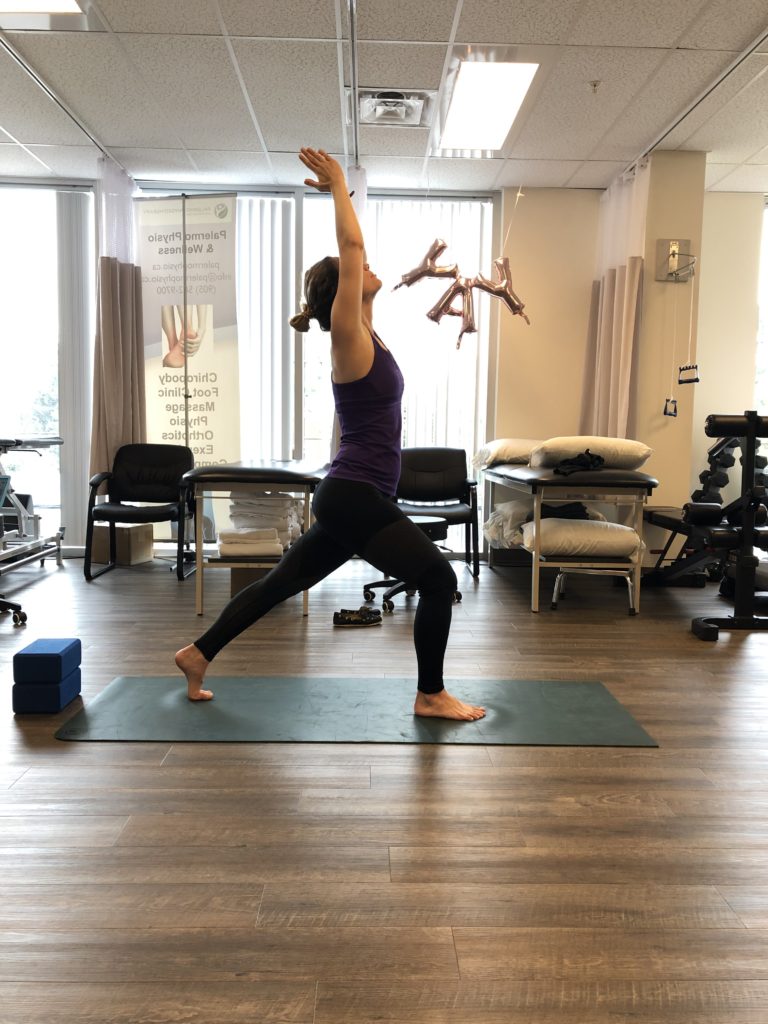
Hold for 5 deep breaths, then switch sides. If easy, transition into Crescent Lunge Pose: instead of angling out the left foot, keep toes pointing forward, lift the heel up and stay on the toes. When bending the right knee over the right ankle, try lowering the left knee toward the ground as far as you are comfortable.
You can have a counter or wall beside you for this. Try to step backwards as one transition movement but it you need a couple small steps to be safe, please do that. Arms can start on hips and move to reach up (one or both).
- Tree Pose
- Starting from Mountain Pose, brings palms together at heart center.
- Shift weight onto the right leg and then place the sole of your left foot onto your right inner calf or inner thigh (never on the knee itself). You can use your hands to help position the foot onto the inner thigh if needed. Option is to keep toes on the ground and heel rests on inner calf / shin.
- The left knee should point outward comfortably.
- Maintain a strong right knee, do not let it lock back. Keep kneecap pointing forward.
- Open up the chest and hold crown of head high.
Hold for 5-10 deep breaths. If easy, you may try eyes closed.
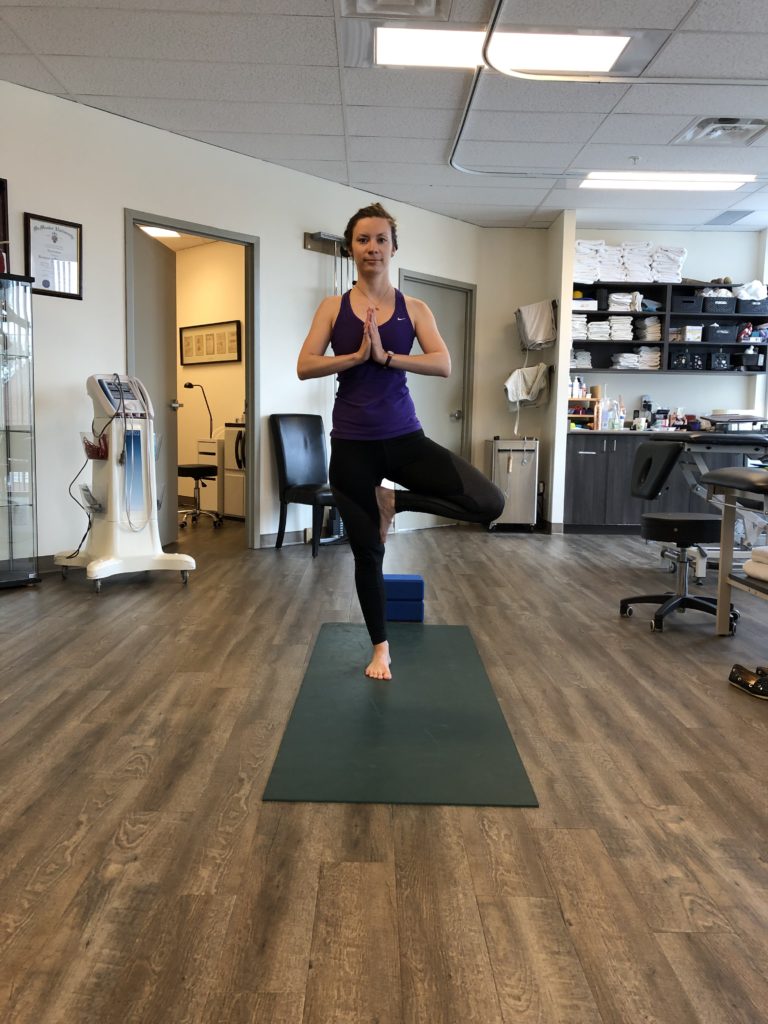
- Eagle Pose
- Starting from Mountain Pose, bring arms in front of you, placing left elbow on top of right.
- Bend the elbows so that forearms are vertical and then bring palms together. If not able to reach the palms together, place the backs of the hands against each other.
- Keep elbows at shoulder height and back upright.
- Then, shift your body weight to your left leg, lift up the right knee, and cross the right thigh over the left, hooking the right foot behind the left calf.
- If your leg can’t wrap around you can always rest it on a yoga block in front or beside the planted leg
- Bend the knees slightly as if to sit.
- Squeeze inner thighs together to maintain your stability.
Hold for 5 or more deep breaths. You can then try switching sides.
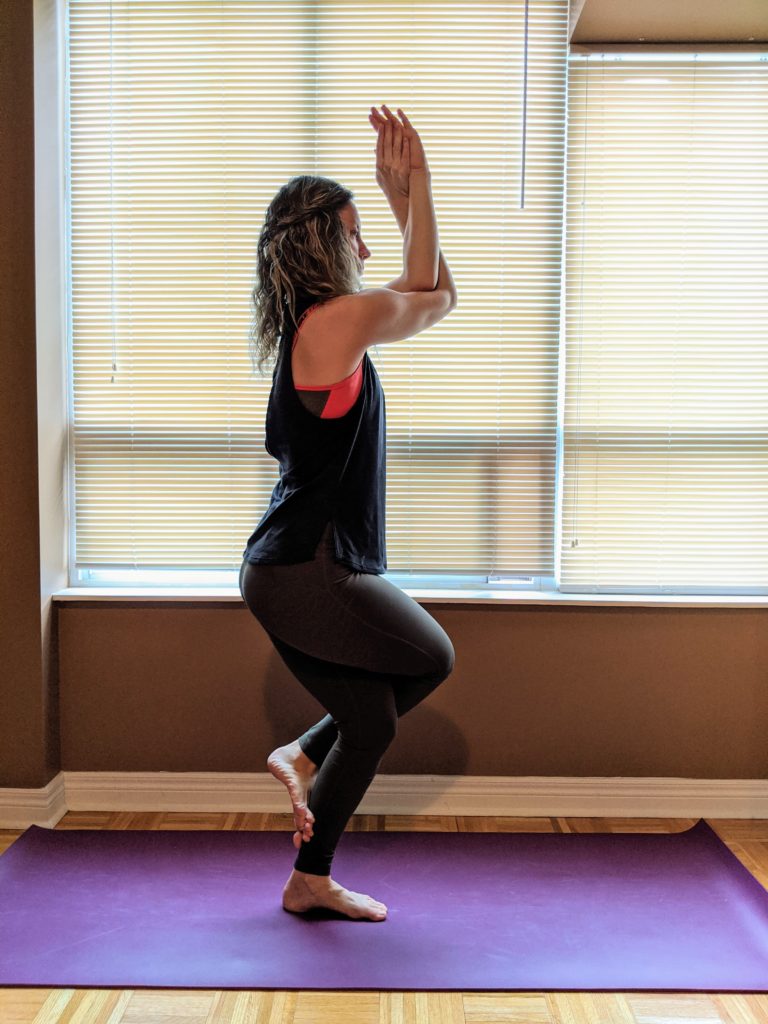
- Warrior III Pose
- Starting from Mountain Pose, shift your body weight onto your right leg and lift your left leg up behind you.
- Your torso and left leg should be as parallel to the floor as possible.
- Reach your arms forward to that they frame your head, and spread out the fingers.
- Avoid locking the right knee back and keep your left foot flexed, as if pushing away the wall behind you.
- Engage the core by pulling in the belly button slightly inward.
Hold for 5-10 breaths, then switch legs.
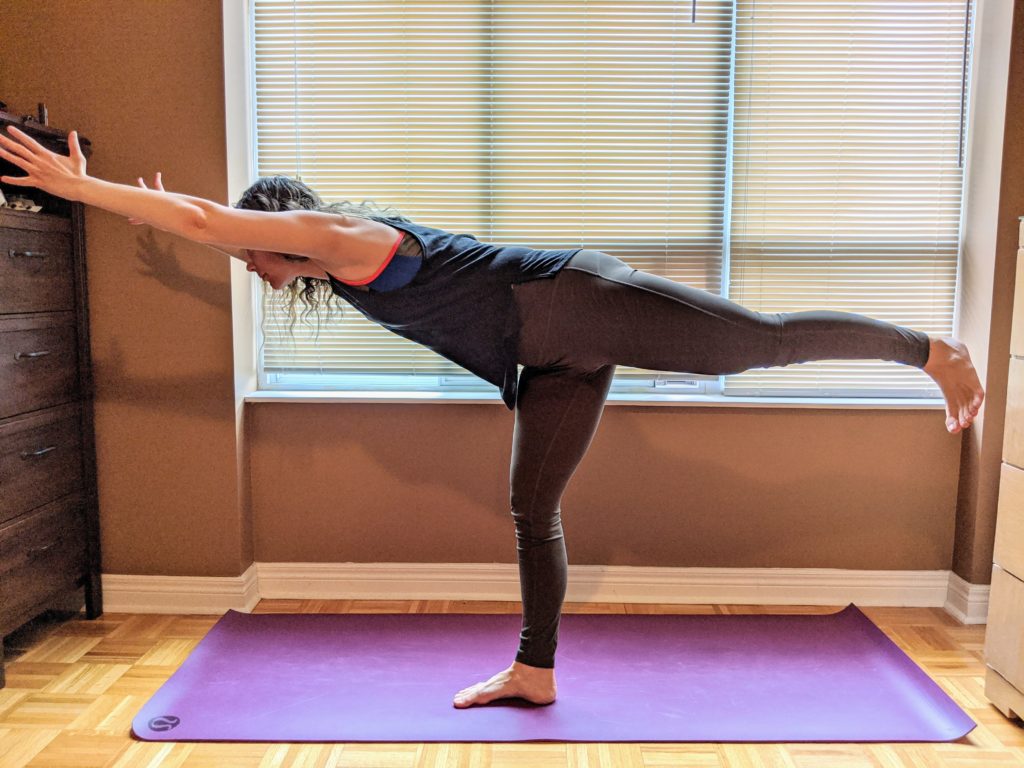
Bonus challenge: Half Moon Pose
- Starting from Warrior II, straighten the right knee and reach the right hand down to the ground behind the right foot.
- Reach the left arm up to the ceiling, turn the chest up to the sky as much as possible, and look up toward your left hand. You are now in Triangle Pose.
- From there, you may use a block underneath your right hand so you can support your balance.
- Lift your left leg up into the air, in line with your torso. You are now in Half Moon Pose.
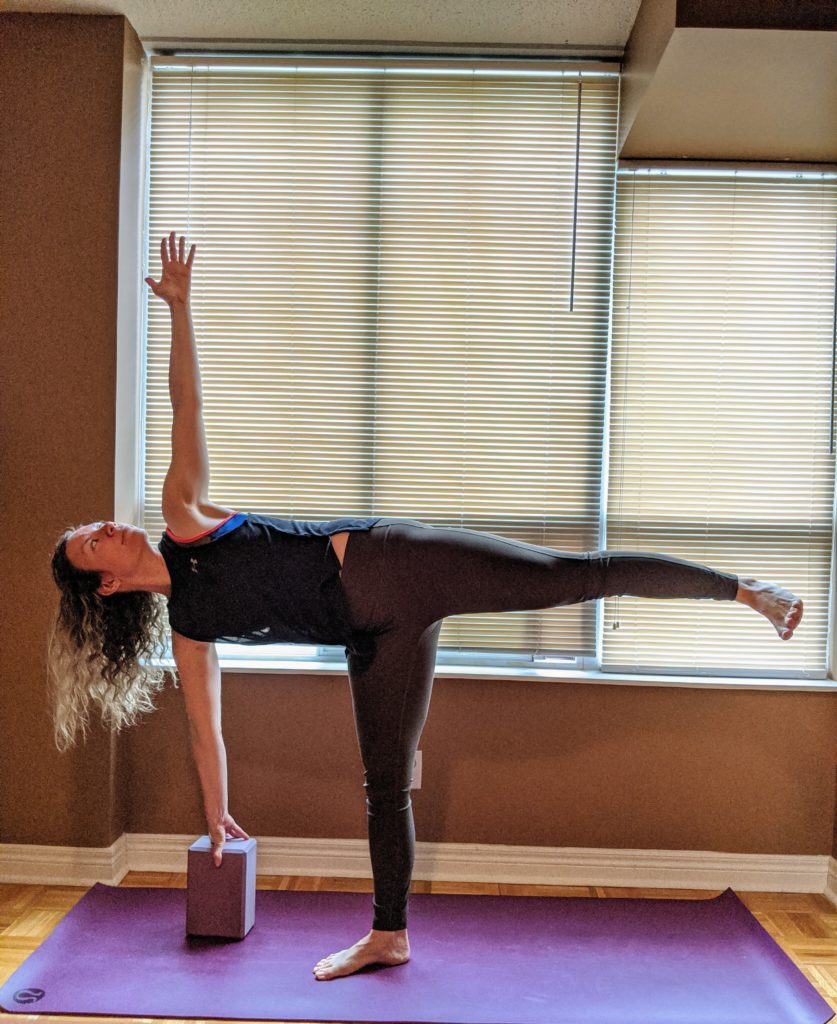
All of these yoga poses can be modified or adapted for ANYONE. We will break down various poses in future blog posts for more comprehensive modifications. Like anything, to make something better or stronger (like balance), it needs practice. It also needs to be challenging for change to take place. One day may feel different from the next, one side may feel different than the other.
As Physiotherapists, we modify and tailor programs for all of our patients to ride this challenge edge in a safe way.
Contact us to see how we can (virtually) help you! Right now we are connecting with people from Oakville and Halton, as well as all over Ontario to meet up virtually for video physio sessions. Most private insurance (benefits) companies allow theses types of sessions!

